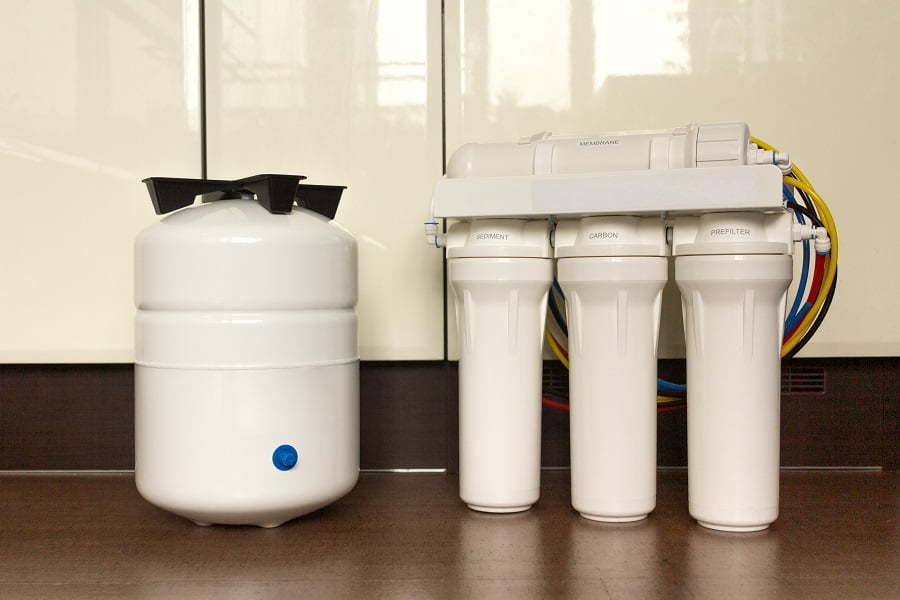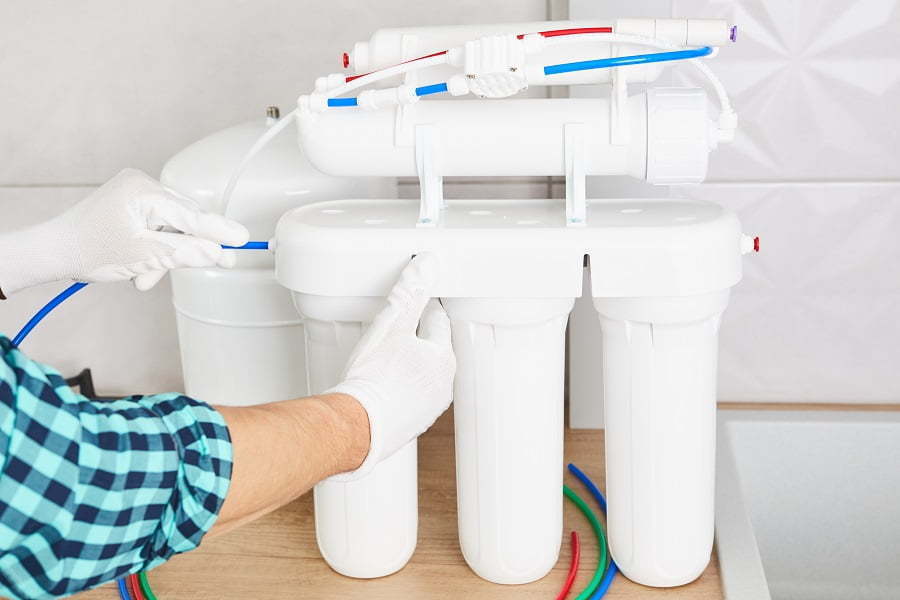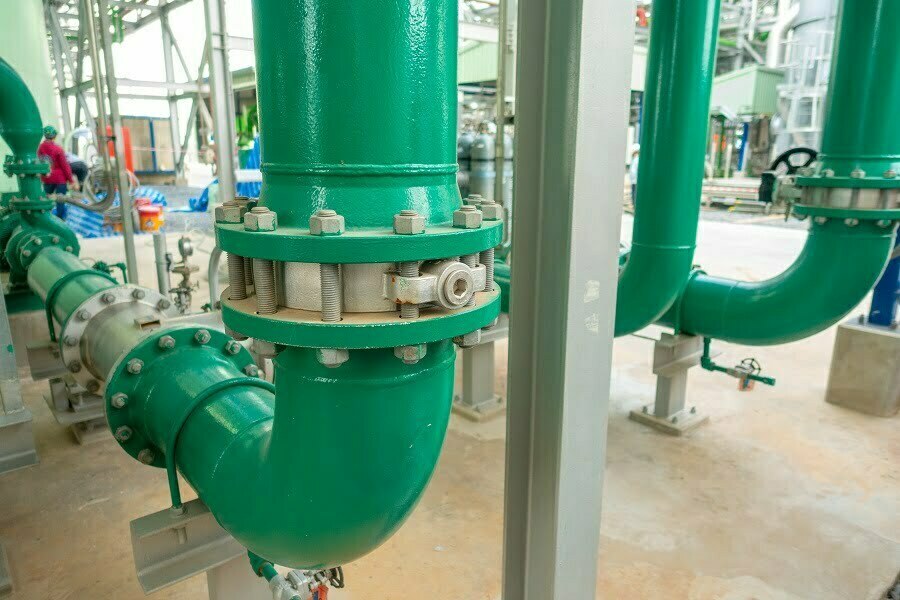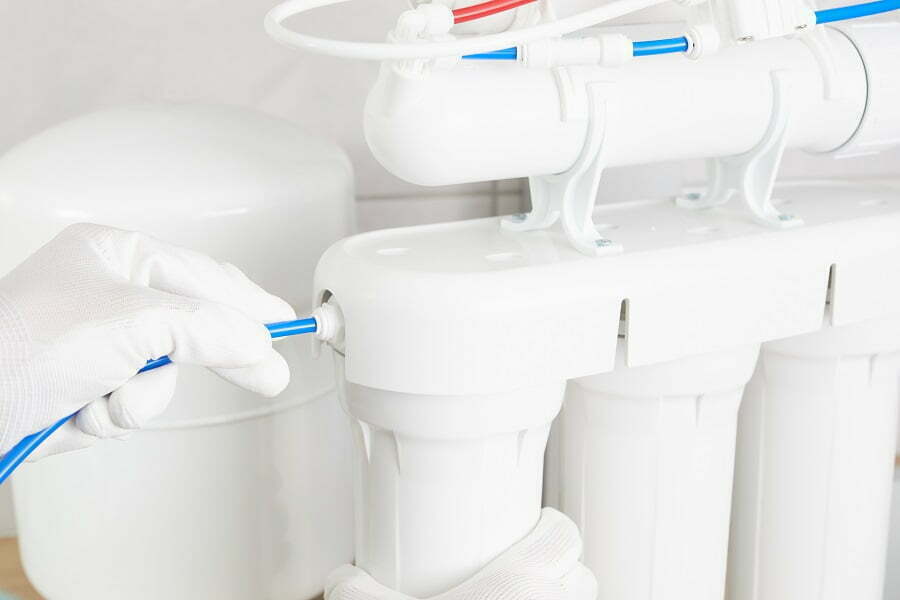Last updated on
Here’s how to choose the right water filter for your home. We cover the most popular types and give you an idea of what might work for you. Read on!
Drinking tap water isn’t particularly healthy even in cities that draw theirs from the cleanest, least polluted rivers. On another hand, buying bottled water every day can be quite expensive, so more and more people are starting to use water filters.
The question arises are they effective? What exactly do filters do, and how do they work? An even better question is are there actual differences between individual models? We’ll answer all of these, and then some, in the sections below, so let’s start from the top.
Benefits and Types of Different Water filters

Essentially, there are four main types of water filters, each sporting a different method of operation, including activated carbon, reverse osmosis, ion exchange, and distillers. Understanding the basics of each type will help you pick the one that caters to your needs the most:
AC Filters
The most common type of filter relies on activated carbon, which acts like a magnet and attracts pollutants in the water, trapping them for good. It’s essentially great when used with mildly polluted water, but it can’t handle larger particles. Another downside to AC filters is that they require fairly frequent replacements due to the fact that pollutants will at one point clog them up.
Reverse Osmosis
Reverse osmosis refers to the process of letting the water pass through the filter while the pollutants are stuck behind it. RO filters utilize strong electrical pumps, which are supplied with smaller built-in filters and nooks that are used to direct the flow of water.
The pollutants are essentially flushed with wastewater while clean water is diverted through the main outlet. While being more efficient and faster than AC filters, they’re also more costly in terms of maintenance.
Heavy-duty Ion Exchange Filters
Scientists typically use ion-exchange filters, as these are by far the most efficient at removing any and all pollutants from the water. Through ion exchange, these filters split atoms of contaminating substances and trap them prior to releasing beneficial ions.
They do, however, pollute the water with sodium, which may affect its taste to some degree. It’s generally harmless and is far ‘healthier’ than the vast majority of other pollutants.
Distillers
Distillers are exactly what they sound like – filters that rely on the process of distillation to remove all contaminants from the water. Although they’re the slowest, they rely on natural processes to trap all sorts of pollutants in a separate tank.
Essentially, these filters boil water, condense the steam, and then reroute the water back into the second tank. This way, most of the water is the purest, although it takes an awful lot of time (or a large number of distiller filters) to get enough for a full household.
Refrigerator filter
Some don’t consider filters that are built into refrigerators as an actual category, but it’s worth mentioning nevertheless. They’re essentially the black sheep in the family since they aren’t built to clean drinking water – they trap and remove pollutants from the fridge’s water. Most are also attached to ice dispensers, although their efficiency in this field is somewhat reduced.
Most refrigerator filters are just carbon filters with a slightly different design, as well as varying constructions. They utilize the same method of operation, and they’re capable of removing the same types of pollutants. Although the vast majority of fridge filters are built into their construction, most can be replaced with upgrades.
Choose Quality Over Quantity

Consumer-grade water filters are mostly AC-type ones, although reverse osmosis filters are fairly popular as well. The value of these two categories lies in the efficiency of the system to properly remove pollutants, not in its quickness.
A fast filter that traps some pollutants is barely better than a regular faucet, as you’ll still introduce toxins to your body (albeit in smaller amounts). On another hand, slow filters will typically give you enough water to fill a smaller bottle, not a full pitcher for example.
Although it may be a more expensive option, buying a handful of slower filters and installing additional faucets in your home is one of the best ways to get a steady supply of fresh, clean water, especially if you live in a large household. Individuals who live alone or with their significant other can easily go by with slower filters.
Choose a Type of Design That is Practical for Your Home

Some of the most common filter designs are pitcher filters, tap-mounted or built-in ones, and under-sink mounted filters. Additionally, there are full-house water treatment systems that are directly connected to the plumbing system and filter all water in the household.
It’s up to you to decide what kind of filter sounds the most practical. Pitcher filters offer portability and are fairly versatile if you don’t need large amounts of water at all times. Tap-mounted filters are great if your kitchen is the center of your home while under-sink filters serve similar purposes while generally boasting a slightly quicker process of filtration.
The full-house water treatment systems are the ultimate filters in the sense that they practically eradicate all pollutants that may contaminate your water supply. They’re obviously better-suited for larger (multi-generation) households that require the largest amounts of fresh water on a daily basis.
Determine Your Budget
The price difference between some of the cheapest entry-level plastic pitcher filters and boutique whole-house systems is measured in thousands of dollars. On another hand, two filters may be in the same price range while their maintenance costs don’t match.
For instance, AC filters require frequent replacements, but doing so is generally more cost-effective than getting a huge electricity bill that ion exchangers and reverse osmosis filters would contribute to.
You should try investing a bit of money in a high-quality filter, but there’s no need to overpay something that’s stronger and more immediate than you actually need. All filters serve the same purpose, and no model is currently capable of trapping 100% of pollutants and contaminants. However, the subtle differences between the models become more apparent the higher the price tag is.
We hope that this guide was useful to you, that you’ve learned something new today, and feel more confident about choosing the right water filter for your household. Make sure you are staying safe in these times we are all going through and have a good one, guys!
Related reading:
Table of Contents





